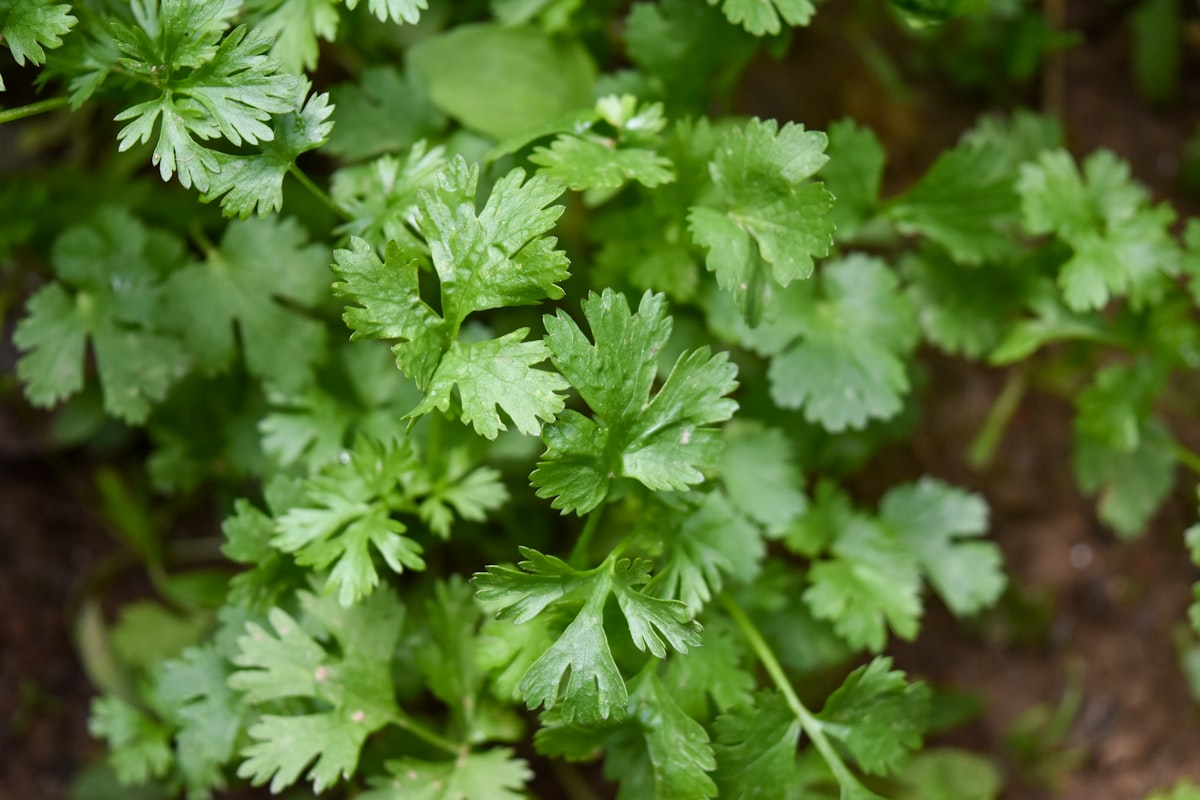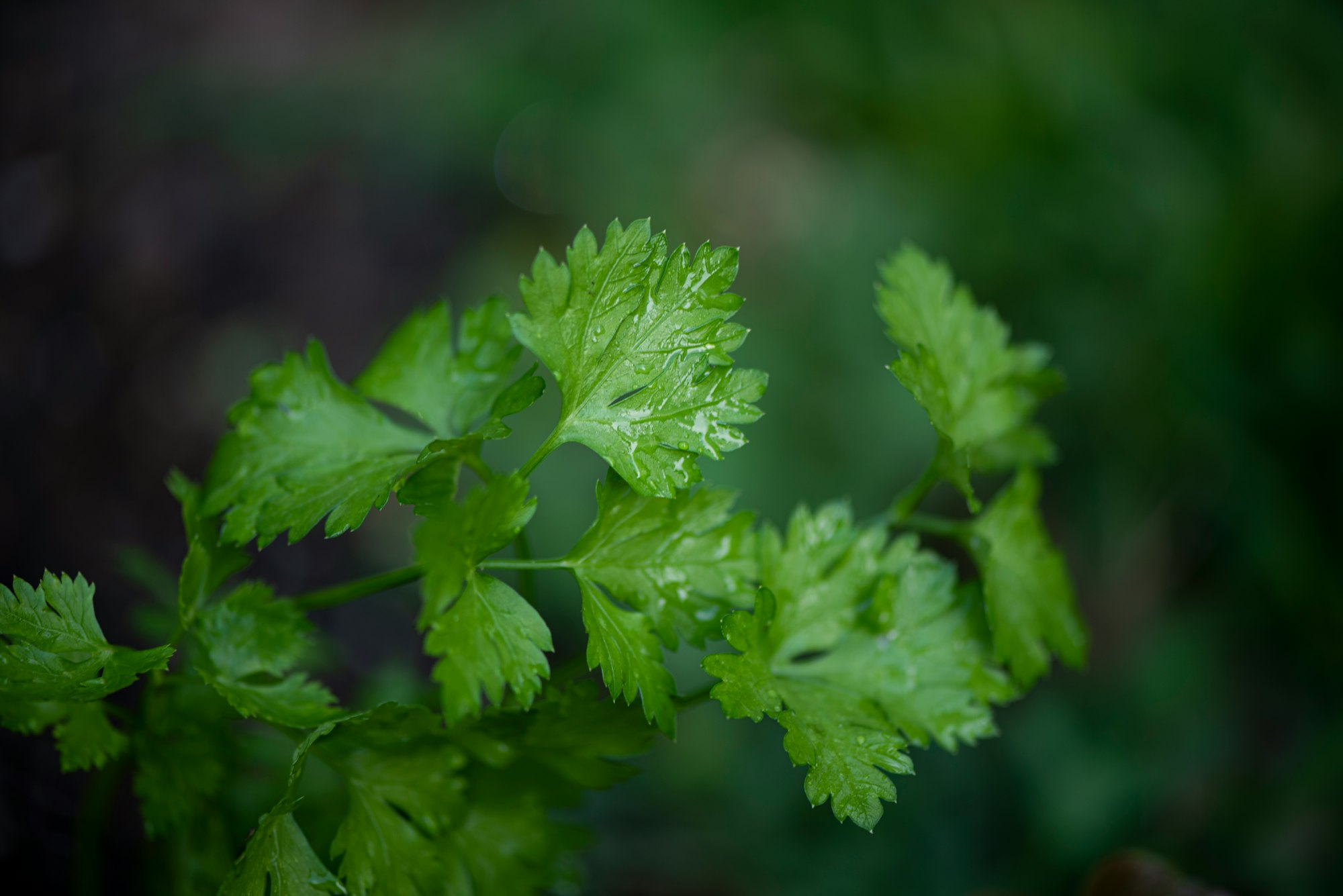How to Grow Cilantro
Growing cilantro can be a rewarding endeavor for both novice and experienced gardeners. This aromatic herb, known for its unique flavors, is a popular choice for home gardens and is used in various dishes worldwide.

Table of Contents
To successfully grow cilantro, it's essential to understand the plant's favored growing conditions and care requirements.
You can enjoy fresh cilantro at home all season long by providing sunlight, water, soil, and temperature.
About Cilantro
Cilantro, also known as Coriander or Chinese parsley, is an annual herb belonging to the Apiaceae family.
Scientifically known as Coriandrum sativum, it is a versatile plant with culinary and medicinal benefits.
In your garden, cilantro is a relatively easy herb to grow, thriving best in cooler weather during the spring and fall seasons.
Its distinctive flavor makes it a popular addition to various recipes, and this beloved herb serves a dual purpose, providing flavorful leaves and aromatic seeds for your cooking endeavors.
Growing Cilantro
To grow cilantro, sow seeds in early spring or fall, as they thrive best in cooler temperatures between 50 and 85 degrees Fahrenheit.
Choose a location with well-drained, light soil and either full sun or part shade.
Work compost or organic matter into the soil at least 18 inches deep before raking it smooth. Place cilantro seeds 1 to 2 inches apart in rows 8 inches apart when sowing.
If planting in a container, select a pot at least 8 inches deep and wide for container planting, with a drainage hole at the bottom.
Fill it with a good potting soil mix and sow seeds 1/2 inch deep, scattering them throughout the container.
Water well, place the container in a sunny location or near a sunny window, or use a grow light indoors.
As cilantro plants grow, thin them out so they're about 3 to 4 inches apart, allowing adequate space for growth.

Caring for Cilantro Plant
Sun and Temperature
Cilantro thrives in bright indirect light but can tolerate some direct sunlight. Ensure your plant receives morning sun in an east-facing window or a sunny sill with limited direct sun.
Keep cilantro in cool weather, as it tends to bolt easily in warmer temperatures.
Water and Humidity
Water cilantro regularly to keep the soil moist, but avoid over-watering as this can lead to root rot.
Ensure proper drainage, particularly if growing cilantro in containers or indoors.
Soil and Fertilizing
Provide cilantro with well-drained, loose soil with an acidic pH for optimal growth.
Work compost or organic matter at least 18 inches deep in the soil to ensure proper nutrient levels.
Fertilize sparingly, as too much can lead to weak, leggy growth.
Pruning and Propagation
Prune cilantro regularly to encourage bushy growth and prevent it from becoming too tall and spindly.
To propagate the plant, space seeds 1 to 2 inches apart in the prepared soil, either early spring or fall, to ensure successful growth.
Troubleshooting Plant Problems
Growing Problems
If your cilantro leaves turn yellow, red, white, or brown, it could be due to hard water or too much direct sunlight.
To fix this, check your water source and avoid overexposure to sunlight.
Seed germination issues, such as seeds not sprouting or leggy seedlings, can be resolved by planting seeds no more than 1/2 inch deep and ensuring the soil is moist but not soggy.
Bolting, or cilantro plants producing flowers and seeds prematurely, is another common problem.
You can prevent bolting by keeping the plant well-watered and in moderately cooler temperatures.
If cilantro seedlings appear floppy or not growing, timely pruning and harvesting can help enhance their growth.
Pests and Diseases
Cilantro plants can be susceptible to pests such as aphids and insects and diseases like powdery mildew.
To control these issues, regularly inspect your plants for signs of infestation and promptly remove any affected parts.
You can apply a suitable organic pesticide or fungicide for specific pests and diseases.
Weeding is essential to prevent competition for resources and reduce the likelihood of pests and disease.
Ensure the planting area is free from weeds and maintain proper plant spacing to enhance air circulation, which can help minimize the risk of diseases like mildew.
Companion Planting
Cilantro works great alongside other herbs like parsley, dill, and basil to help improve its flavor and growth.
It can also be planted near vegetables like tomatoes, peppers, and spinach to help repel pests and attract beneficial insects.
Conclusion
Growing and harvesting cilantro is rewarding, providing fresh and flavorful leaves and seeds to enhance your culinary creations.
You can enjoy this versatile herb throughout its life cycle by planting cilantro seeds in well-drained soil and ensuring adequate sunlight and water.
The leaves can be harvested when they reach a suitable size for adding to dishes like fresh salsa, while the seeds, also known as coriander, can be collected for a warm spice addition to various recipes.
Properly storing freshly harvested cilantro leaves will help you prolong their usability and maintain their unique taste.
Moreover, cilantro plants even attract pollinators to your garden, offering a bonus to container gardening enthusiasts and those passionate about supporting local ecosystems.
Frequently Asked Questions
How to propagate cilantro in water?
Cut a healthy stem with leaves from your cilantro plant to propagate cilantro in water. Place the cut stem into a container filled with water, ensuring the leaves don't touch the water. Change the water every few days to keep it fresh and clear.
What are the best conditions for growing cilantro in different climates?
Cilantro can be grown in various climates but thrives in mild temperatures between 50°F to 85°F. During peak heat hours, place your cilantro in a partially shaded area in hotter climates. In cooler climates, choose a location with plenty of sunlight and consider using a frost cover if necessary.
How to maintain cilantro growth year-round?
To maintain cilantro growth year-round, continuously sow seeds every 3-4 weeks. This will ensure a constant supply of fresh cilantro leaves. Alternatively, you can opt for indoor growing methods for a continuous harvest during colder months.
Tips for growing cilantro indoors?
To grow cilantro indoors successfully, place your cilantro in a pot with well-draining soil and a good amount of sunlight. A south-facing window is ideal for sufficient light exposure. Keep the soil moist but not overly wet, and maintain humidity levels in your home by misting the plant or using a humidifier.
What are the optimal temperatures for cilantro growth?
Cilantro thrives in moderate temperatures ranging between 50°F to 85°F. The plants prefer cooler conditions and might bolt (produce seeds and lose their flavor) when temperatures rise above 85°F, so ensure your cilantro is placed in a suitable location based on your climate.
How to prevent and manage bolting cilantro?
To prevent cilantro from bolting, plant it in the spring or fall to avoid extreme heat. Keep the soil moisture consistent and provide some afternoon shade when temperatures soar. If bolting does occur, promptly trim flower stalks and harvest the remaining leaves before they lose their flavor.


